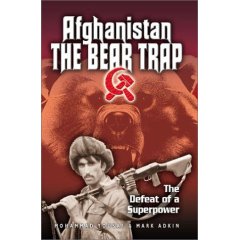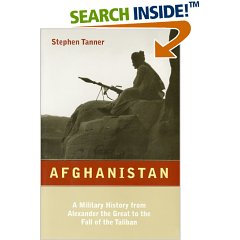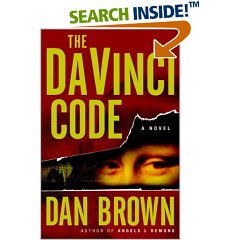
Imperial Hubris: Why The West Is Losing The War On Terror on amazon.com
Reader Rating: 9/10
Salaams! Read this book this summer and was duly impressed with its deep analysis of the whole situation surrounding 9/11. The book includes analysis of both the build-up to 9/11 and its aftermath, with the take-down of the Taliban and the invasion of Iraq. Anonymous' analysis (BTW--he has now come out in the open and the latest edition of the book has his name on it: Michael Scheuer).
The book's central thesis is that the everything the US does--and the way it views people and events abroad--is "heavily clouded" with a an arrogance and self-centeredness that he calls "imperial hubris." Hubris = pride/arrogance. He suggests that this perspective has developed since the end of WWII, when the US began "interpreting the so it makes sense to us," and is not necessarily aligned with reality.
He believes that our entrance into and involvement presently in both Afghanistan and Iraq are "half-hearted" and represent an on-going habit of the US fighting "half-started" and "half-finished" wars. The pertinent example from Afghanistan is how the US again used "proxy" warriors--the Northern Alliance fighters--to half-heartedly engage the major retreating Taliban/al-Qaeda forces, allowing them to slip over the mountainous border into Pakistan, where they regroup to fight on another day. He derides the US military and intelligence agencies for not reviewing "the checkables," which due to our involvement in Afghanistan for 2 decades now, had a mountain of information to be mined and learned from.
I do believe that at times the author is a bit too dramatic and critical, almost seeing that no good has been done or can come out of the operations worldwide against al-Qaeda and our involvement in Afghanistan and Iraq. I have a more positive outlook on what has been accomplished in Afghanistan based on my first-hand interactions with local Afghans and things I have seen on multiple trips across the country. That said, there are still things about what the US government & military does that are quite disturbing to me.
Here are some interesting quotes from the book, along with what the author lists as some fatal "Seven Pillars of Truth about Afghanistan:”
Quotes from Imperial Hubris: Why The West Is Losing The War On Terror, by Anonymous.
“One of the greatest dangers for Americans in deciding how to confront the Islamic threat lies in continuing to believe—at the urging of senior U.S. leaders—that Muslims hate and attack us for what we are and think, rather than for what we do.” (pg. 8)
“The focused and lethal threat posed to the U.S. national security arises not from Muslims being offended by what America is, but rather from their plausible perception that the thing they most love and value—God, Islam, their brethren, and Muslim lands—are being attacked by America. What we as a nation do, then, is the key causal factor in our confrontation with Islam. It is, I believe, the Muslim perception that the things they love are being intentionally destroyed by American that engenders Islamist hatred toward the United States, and that simultaneously motivates a few to act alone and attack U.S. interests; a great many more to join organizations like al Qaeda and its allies; and massive numbers to support those organizations’ defensive military actions with prayers, donations, blind eyes, or logistical assistance.” (pgs. 9-10)
“When entering on duty as an intelligence officer two decades and more ago, one of my first supervisors often said the key to framing and solving intelligence problems was to first ‘do the checkables.’ The checkables were those parts of a problem that were knowable, the things on which there were classified archival records, pertinent and available human experience, current human assets to consult, or even the results of media and academic research—the latter then, as now, generally underused because of the false assumption that information is not useful unless classified. This supervisor’s recipe was to exploit to exhaustion the ‘checkables’ to learn the problem’s history and context, determine precisely what we already knew, establish a range of things we knew little or nothing about, and thereby, identify the information we needed to acquire before acting to resolve the problem.” (pgs. 21-22)
“Checkables: success rides on how fully they are retrieved, reviewed, and absorbed.” (pg. 32)
From a study of the Soviet General Staff study on the Soviet war in Afghanistan:
“When the highest political leaders of the USSR sent its forces into war, they did not consider historic, religious, and national peculiarities of Afghanistan. After the entry these peculiarities proved the most important factors as they foreordained the long and very difficult nature of the armed conflict. Now it is completely clear that it was an impetuous decision to send Soviet forces into this land.” [goes on to mainly cite Afghan’s history of centuries of warfare between various warring groups, and their hatred of unbelieving/infidel armed invaders] {pg. 32)
Author’s list of the fatal “Seven Pillars of Truth about Afghanistan”—Seven Checkables—that were ignored in the U.S. response after 9/11:
Pillar 1: Minorities can rule in Kabul, but not for long:
“The Pushtuns, who have ruled Afghanistan for 250 years,” explained Pakistan’s former chief of army staff, General Mirza Aslam Beg, “have been pushed into a corner and are brooding over the [mis]treatment of fellowPashtuns” by the Karzai regime.”
Pillar 2: The Afghans who matter are Muslim tribal xenophobes:
“They are as powerful as they were twenty years ago; Islam, in fact, is far stronger and more conservative.”
Pillar 3: Afghans cannot be bought:
“Afghans will always take your money, but afterwards they will do what you want only if they were going to do it anyway.”
Pillar 4: Strong governments in Kabul cause war:
“Even when ruled by a monarchy—until 1973—the central government was weak. The king was greatly respected as an individual, but, in terms of direct rule, his government’s power did not extend much beyond Kabul.—thus Karzai’s current moniker, ‘the mayor of Kabul.’”
Pillar 5: An international cockpit not insular backwater:
“While each of Afghanistan’s neighbors publicly speak of a desire and support for a united, stable Afghanistan, one of them share the same definition of unity and stability, and none will tolerate a stable Afghanistan unless it protects their interests.”
Pillar 6: Pakistan must have Islamist, Pashtun-dominated Afghan regime:
“While doing what it can to appear helpful to the United States and rhetorically support of the ATA [Afghan Transitional Authority], Pakistan’s national survival depend on reinstalling a Taleban-like regime in Kabul and avoiding actions that would trigger warfare—civil war, really—between the Pakistan’s well-armed Pashtun tribes and the Pakistani military.”
Pillar 7: There will be an Islamist regime in Kabul:
“To state the obvious, Afghanistan is a country of truly conservative Islamic temperament…[a]nd the trend is toward an ever more conservative brand of Islam…As seen from an Afghan-centric perspective, the Afghan Islamists have twice been denied the fruit of their military victories; they are certain to try for them again…The reestablishment of an Islamic regime in Kabul is as close to an inevitability as exists.”
Again, a very good/interesting read that makes one think about what we (the US) have done in the past, what we are doing, and where we are heading.
All for now--wes
---------------------------------
Imperial Hubris: Why The West Is Losing The War On Terror (Paperback)
by Michael Scheuer
First Sentence:
In America's confrontation with Osama bin Laden, al Qaeda, their allies, and the Islamic world, there lies a startlingly clear example of how loving something intensely can stimulate an equally intense and purposeful hatred of things by which it is threatened.
57 used & new available from $10.76
Hardcover
138 used & new from $3.00
Editorial Reviews
Amazon.com
The war on terror has created near unanimity on many points, at least within the American press and political leadership. One essential point of agreement: al Qaeda specifically and radical Islamism in general are stirred by a hatred of modernity. Or as President George W. Bush has articulated repeatedly, they hate freedom. Nonsense, responds the nameless author of this work and 2003's Through Our Enemies' Eyes (the senior U.S. intelligence official's identity became an open secret by publication date). Indeed, he grimly and methodically discards common wisdom throughout this scathing and compelling take on counterterrorism. Imperial Hubris is not a book that will cheer Americans, regardless of their perspectives on the post-9/11 environment. We are, the author notes, losing the war on terror. Hawks will squirm as the author heaps contempt on U.S. missions in Afghanistan (too little, too late) and Iraq ("a sham causing more instability than it prevents"), but opponents of Bush administration policies may blanch at Anonymous' suggestion that what's needed is for the West to "proceed with relentless, brutal, and, yes, blood-soaked offensive military actions until we have annihilated the Islamists who threaten us." Quoting the at-all-cost likes of William Tecumseh Sherman and Curtis Lemay on one hand and contending that unrelenting military measures be accompanied by concessions to the ideology of the militants on the other are unlikely to curry widespread support from either side of the divide. And how will readers conditioned to references to Osama bin Laden as a deranged gangster or simple-minded fanatic with deep pockets digest the respect accorded "the most popular anti-American leader in the world today"? Imperial Hubris clearly wasn't written to win friends, though the author believes it's essential that his words influence people at the top. Whether it will is debatable, but that this blunt, forceful, urgently argued polemic recharges the discussion is a foregone conclusion. --Steven Stolder--This text refers to the Hardcover edition.
From Publishers Weekly
It's unclear how, in an age when even office workers must sign confidentiality agreements, an alleged CIA Middle Eastern specialist has gotten permission to publish a sprawling, erudite book on the origins and present state of the "war on terror." His main point is that Arab antagonism to the West (and even non-fundamentalist Arab regimes' winking at terrorism) has its root in real grievances that have gone unaddressed by U.S. measures. The actions of the Saudis, and their U.S. supporters, come in for some hard criticism, as does the elevation of Northern Alliance warlords to de facto governors of Afghanistan. The author makes some challenging remarks regarding Israel ("Surely there can be no other historical example of a faraway, theocracy-in-all-but-name of only six million people that ultimately controls the extent and even the occurrence of an important portion of political discourse and national security debate in a country of 270-plus million people that prides itself on religious toleration, separation of church and state, and freedom of speech") while playing down the extent to which the Taliban itself was a corrupt theocratic regime. But his annotated compendia of battles and skirmishes won and lost by the U.S. and al-Qaeda are gripping, and his engagement with his subject has made him a pundit-in-demand.
Copyright © Reed Business Information, a division of Reed Elsevier Inc. All rights reserved.--This text refers to the Hardcover edition.
Product Details
Paperback: 332 pages
Publisher: Potomac Books (March 4, 2005)
Language: English
ISBN: 1574888625





















